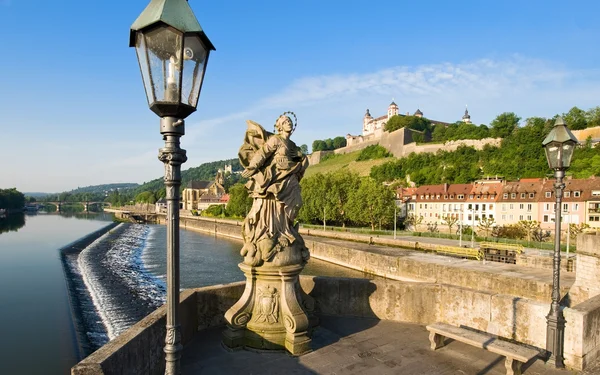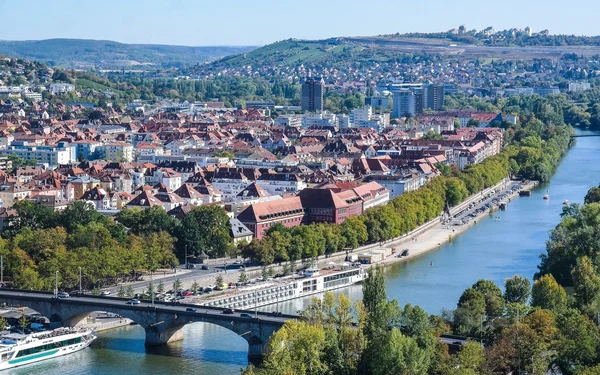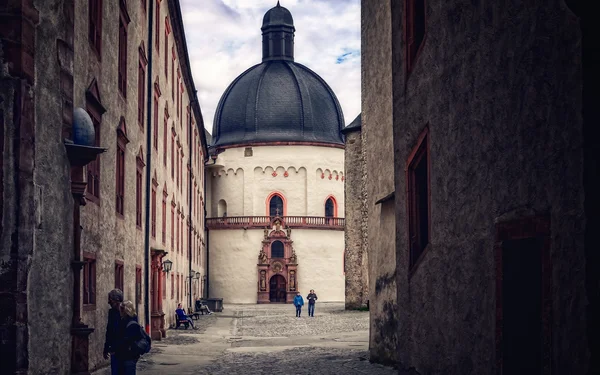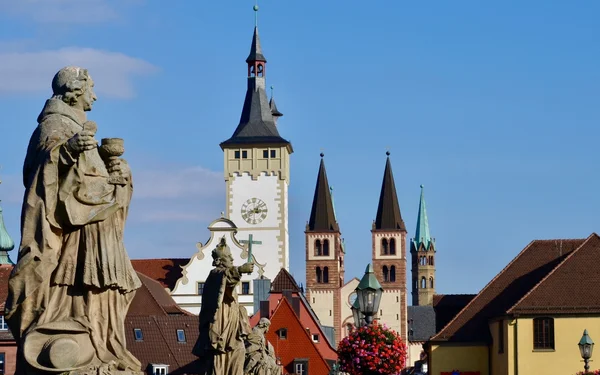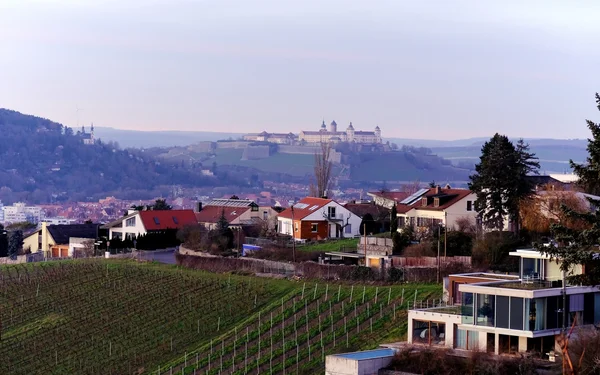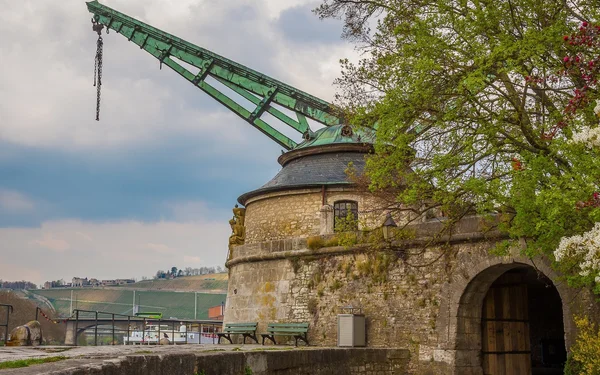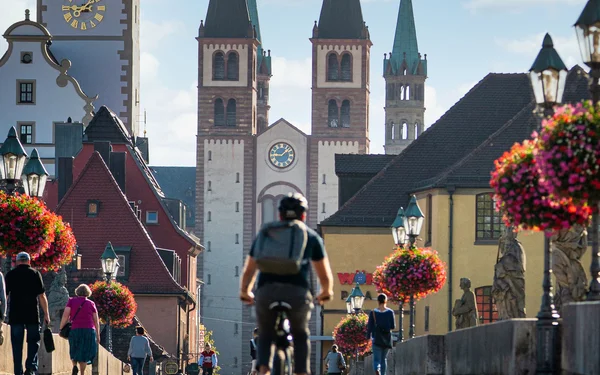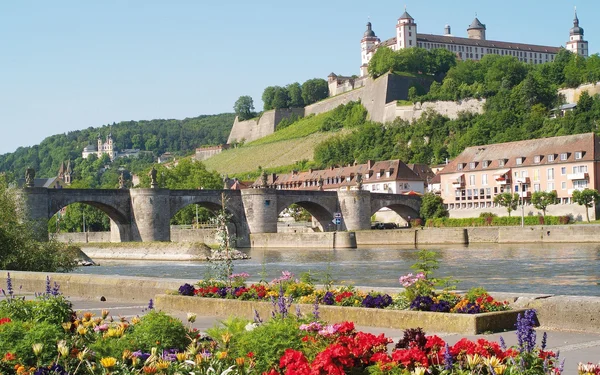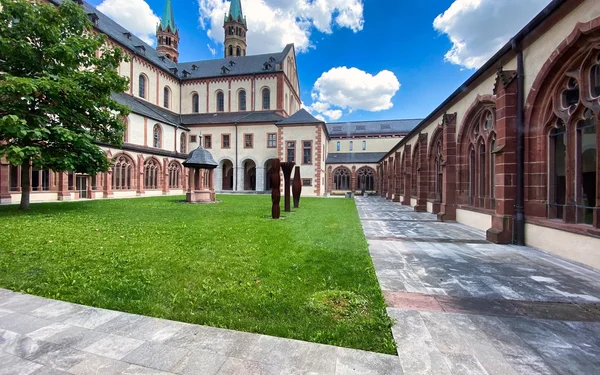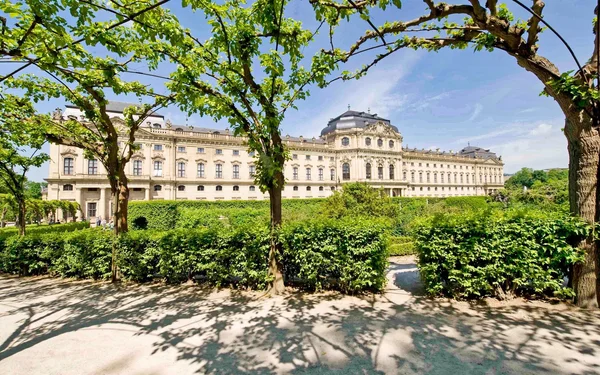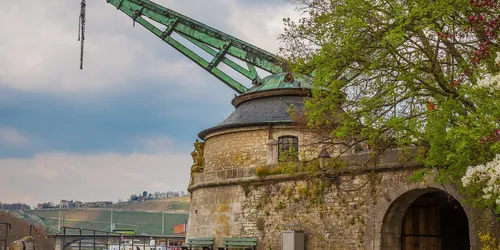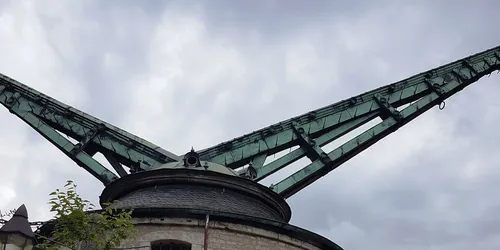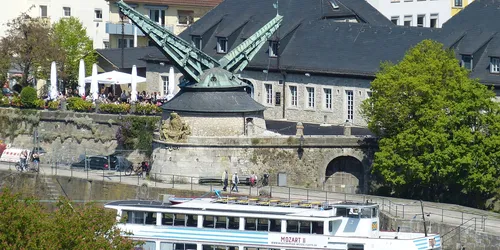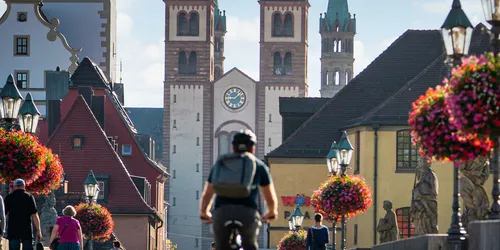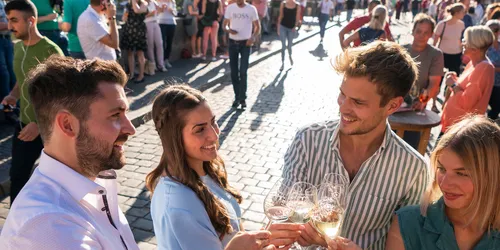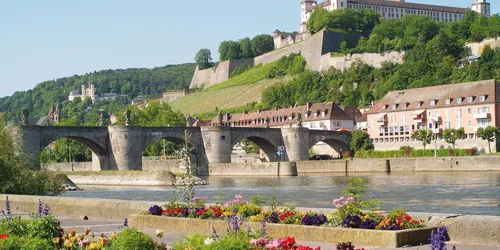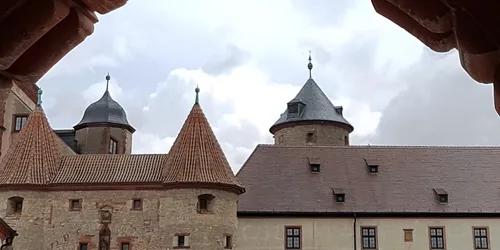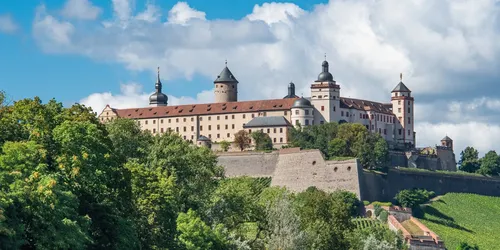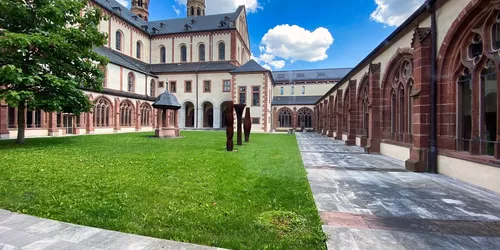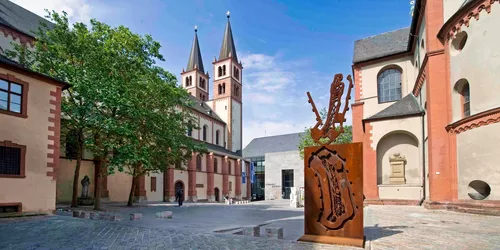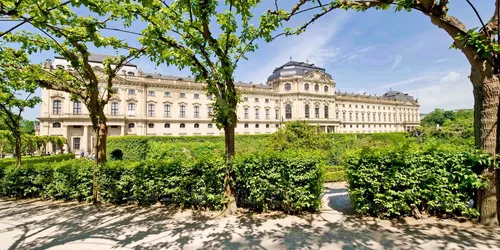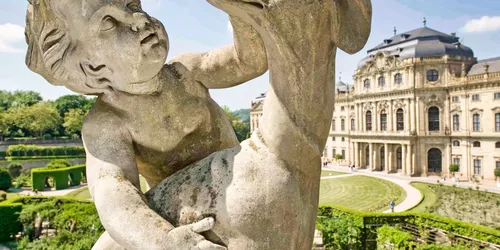Würzburg's old treasures
You've never seen Würzburg like this before! This city tour combines important religious and secular buildings in the city and rewards you at the end with a marvellous view over the city and the River Main.
Würzburg
4 h
8 km
It is difficult to choose from Würzburg's countless treasures. The beautiful university city lies nestled on the Main, surrounded by vineyards. For over 1000 years, the river and the wealthy and powerful prince-bishops with their architectural heritage have characterised the life and image of the city.
The Marienberg Fortress or the Prince-Bishops' Residence, a UNESCO World Heritage Site since 1981, would be reason enough to visit Würzburg. This also applies to the most beautiful of the city's many churches. This tour combines the most impressive sacred and secular buildings into a city and riverside walk, the literal highlight of which is a breathtaking view over the city and the River Main from the Fürstengarten.
A city tour for families, culture lovers and connoisseurs
Start and end station
Start station
Würzburg Hauptbahnhof
5 tour steps
8 km / 4 Stunden
End station
Würzburg Hauptbahnhof
Our tip: Please make sure to check your train connection and the expected capacity before you start your journey.
Schedule
Tour starts on Würzburg Hauptbahnhof
Direction
At the main railway station, the Franconian Apostle Kilian points you in the direction of the city centre with his blessing on the Kilian Fountain. You give him a friendly nod and decide to take a different route. On this tour, you will only cross the old town centre once and otherwise walk through green spaces, vineyards and along riverbanks.
First turn right to walk behind the bus station through the Ringpark towards the banks of the Main. Once you have crossed the Röntgenring and the tram tracks at the end of the park, stroll southwards along Kranenkai until you reach Würzburg's landmark, the eponymous Alter Kranen.
Mainkai
97070
Würzburg
Direction
Direction
Festung Marienberg
97082
Würzburg
Direction
Domstraße 40
97070
Würzburg
Direction
Residenzplatz 2
97070
Würzburg
